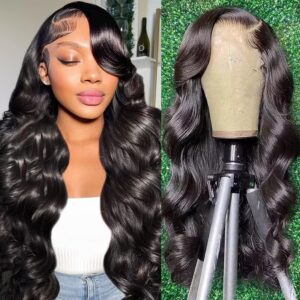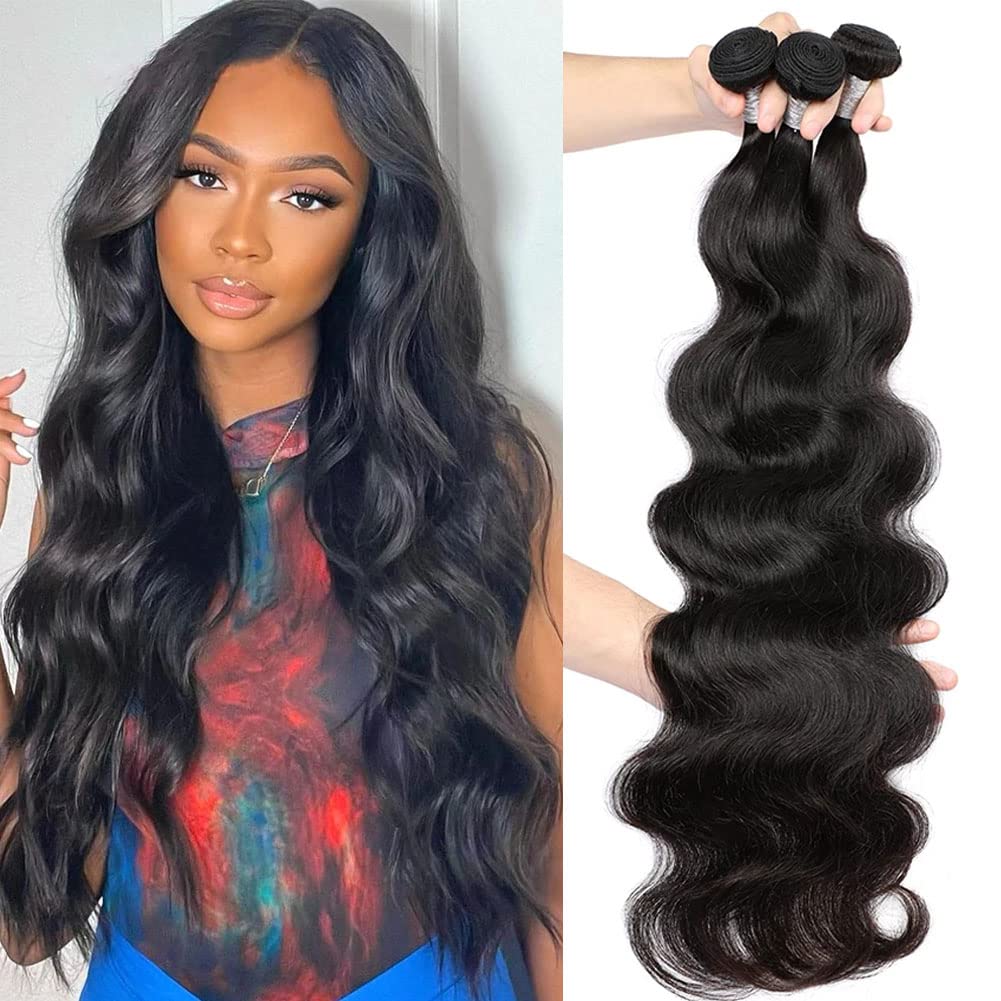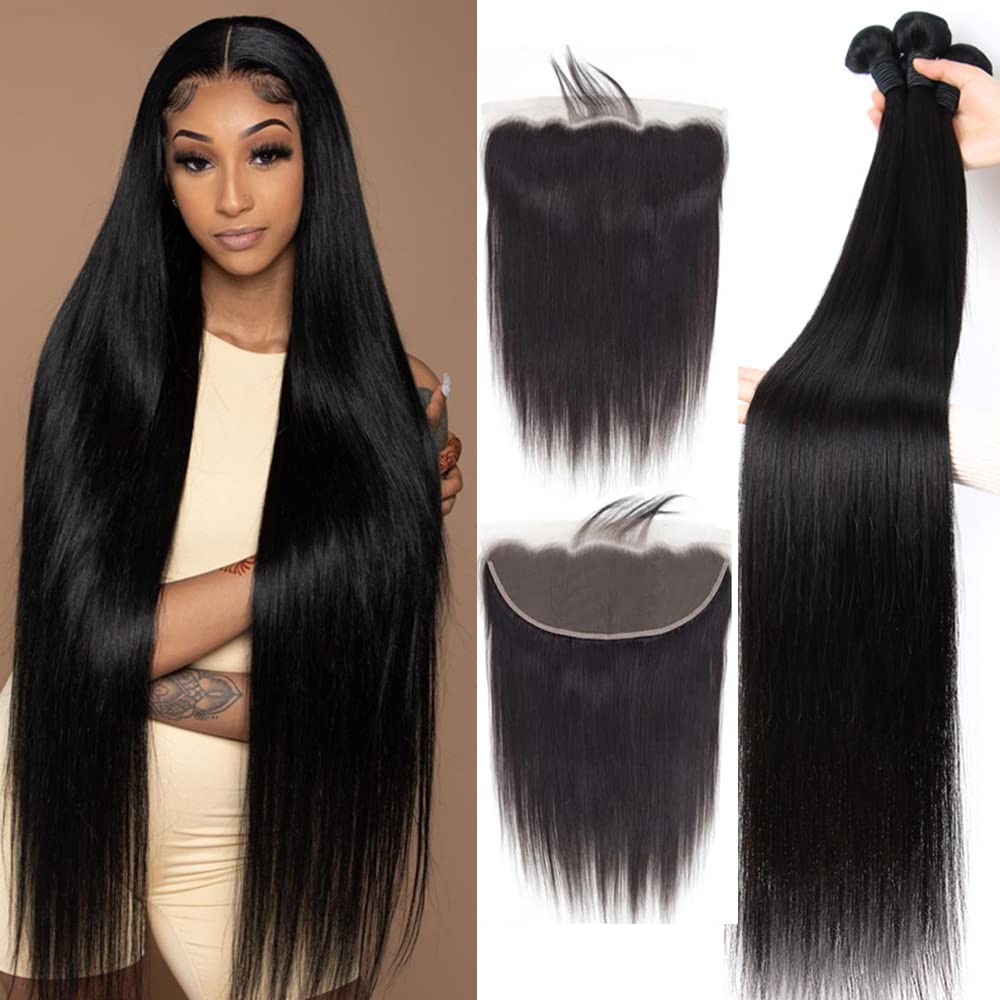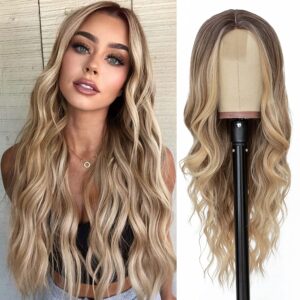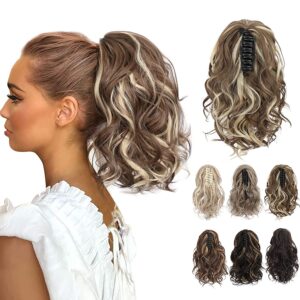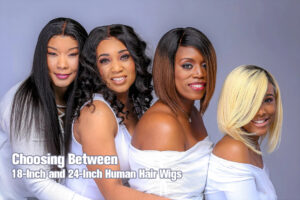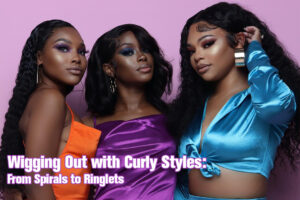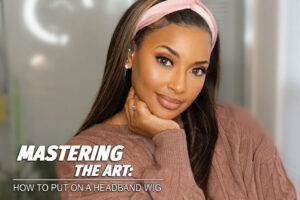The bob wig hairstyle has achieved enduring popularity and cultural significance over the decades. Originating in the early 20th century as a symbol of women’s liberation and modernity, the bob cut quickly gained traction. Its sleek and timeless appearance, characterized by its short length and even ends, challenged traditional notions of femininity. The bob wig’s resurgence in the 1960s and subsequent iterations in various lengths and textures have cemented its status as a versatile and iconic choice. Celebrities and fashion icons have frequently embraced the bob wig, propelling it to the forefront of trends. Today, its adaptability to different face shapes, ages, and personal styles makes it a staple in the wig and fashion industry, maintaining its position as a symbol of empowerment and self-expression.

Bob wigs hold a unique allure in modern fashion due to their unparalleled versatility. Their ability to effortlessly transition from casual to formal settings makes them a coveted choice. Bob wigs offer a chic and polished look while being easy to maintain. They cater to a wide array of face shapes and allow for diverse styling options, from sleek and professional to playful and textured. As an embodiment of timeless elegance and contemporary flair, bob wigs resonate with individuals seeking a hairdo that complements their dynamic lifestyles, making them an essential accessory in the world of modern fashion.
This article aims to offer readers a comprehensive resource for selecting, styling, and caring for bob wigs. By addressing everything from wig types and styling techniques to maintenance routines, it empowers individuals to make informed choices and confidently embrace the versatility and charm of bob wigs in their personal fashion journey.
Understanding Bob Wigs
A bob wig is defined by its distinct characteristics of length, cut, and style. In terms of length, a bob wig typically falls between chin and shoulder length, framing the face elegantly. The cut of a bob wig features straight lines and even ends, often with subtle layers or angles. This clean and structured cut is what distinguishes the bob style. The overall style of a bob wig can vary, from classic straight bobs to textured wavy or curly bobs, offering a range of looks that suit different preferences and occasions.
Types of Bob Wigs

Classic Bob Wig
A straight-cut, chin-length bob that exudes elegance and simplicity. It’s a versatile choice suitable for various occasions.
Short Bob Wig
This above-chin-length bob can have variations like angled cuts or layers, adding a modern and edgy twist to the classic style.
Long Bob (Lob) Wig
The “lob” extends beyond the shoulders, offering a more relaxed and casual take on the traditional bob while maintaining its sophistication.
Wavy or Curly Bob Wig
Textured bob wigs feature waves or curls, providing a playful and dynamic element to the hairstyle.
Asymmetrical Bob Wig
With uneven lengths, one side of this bob is longer than the other, creating a bold and avant-garde look.
Inverted Bob Wig
Stacked layers at the back and shorter layers at the front create a dramatic angle that adds volume and movement.
Blunt Cut Bob Wig
This style features ends cut straight across for a clean and sharp appearance.
Pixie Bob Wig
A blend of a bob and a pixie cut, it’s short on the sides and back but slightly longer on top for versatile styling.
Layered Bob Wig
This bob incorporates layers for added dimension and movement while maintaining a sense of sophistication.
Choosing the Right Bob Wig
Face Shape
Determine your face shape (round, oval, square, heart, etc.) as it influences which bob style will complement your features best.

Length
Choose a bob wig length that suits your preferences and lifestyle. Classic bobs are chin-length, while lobs extend to the shoulders.

Texture
Decide on the texture you prefer—straight, wavy, or curly. Select one that aligns with your natural hair or desired look.
Material
Opt for human hair for a natural appearance and styling versatility, or synthetic hair for affordability and low maintenance.
Color
Match the wig color to your natural hair or try something new. Consider skin tone and personal style when selecting shades.
Cap Construction
Choose from full lace, lace front, or standard caps. Full lace offers versatility, while lace front provides a natural hairline.
Budget
Set a budget and explore options within that range. Human hair wigs tend to be pricier than synthetic ones.
Styling Options
Consider how you want to style the wig. Human hair wigs allow heat styling, while synthetic wigs have pre-set styles.
Picking the Perfect Bob Wig
Hair Material of Bob Wig
Human hair wigs offer a natural look, texture, and styling versatility, but can be more expensive and require more care. Synthetic wigs are budget-friendly, come pre-styled, and require minimal maintenance, but may lack the realism of human hair. Choose human hair for authenticity and customization, and synthetic for convenience and affordability. Consider your priorities and budget when deciding between the two.

Bob Wig Cap Construction
Full Lace Cap
Constructed entirely from a fine lace material, allowing for versatile styling and natural-looking parting anywhere on the scalp.
Lace Front Cap
Features a lace panel at the front hairline, enabling a realistic hairline appearance. The rest of the cap is typically made from a more traditional cap material.
Monofilament Cap
Utilizes a sheer, flesh-toned material at the crown that resembles the scalp, providing natural-looking parting and hair movement.
Basic Cap
The most common and affordable type, featuring wefts of hair sewn onto a basic cap structure with adjustable straps for fit.
Hand-Tied Cap
Each hair strand is individually hand-tied to the cap, allowing for natural movement and a lightweight feel.
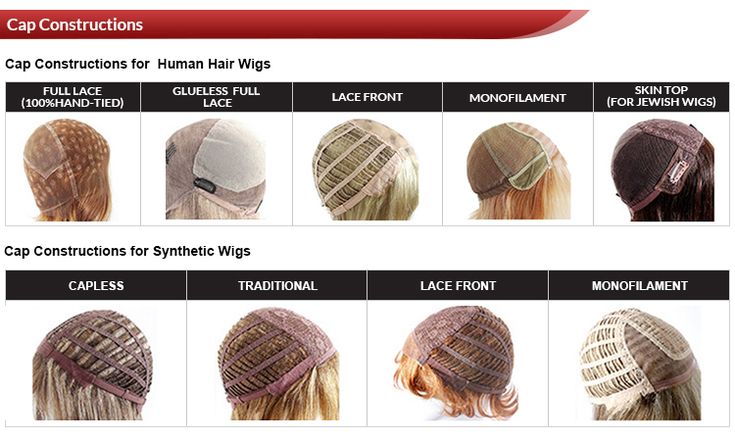
Color Selection of Bob Wig
Matching natural hair color or experimenting with different shades.
Choosing between matching your natural hair color or experimenting with different shades in a wig depends on whether you want a seamless, natural look by staying close to your original color, or if you’re seeking a fresh style and expression by trying out new, contrasting shades that enhance your features and reflect your personality.

Highlights, ombre, and other coloring options.
Wig coloring options, such as highlights, ombre, and various shades, provide a spectrum of possibilities to elevate your style. Highlights add dimension and texture, ombre offers a gradual color transition, while exploring different shades enables you to personalize your look for a touch of uniqueness.
Styling Techniques for Bob Wigs
Heat Styling
Styling bob wigs involves utilizing tools like flat irons, curling irons, and blow dryers to achieve a range of looks. Flat irons create sleekness, while curling irons offer waves or curls. Blow dryers assist in shaping and setting styles. Heat protectants are crucial to prevent damage. With these tools, you can effortlessly transform your bob wig, adapting it to your desired aesthetic for any occasion.
Curling and Straightening
Curling and straightening bob wigs is a versatile styling approach that allows you to switch between different looks. To curl, use a curling iron or wand to wrap sections of the wig hair, holding for a few seconds before releasing. For straightening, glide a flat iron down the hair shaft in small sections. Remember to use heat protectants to prevent damage and adjust the heat settings based on the wig material (lower for synthetic, higher for human hair). This technique empowers you to tailor your bob wig to suit your mood and style preferences.

Adding Volume and Texture
Adding volume and texture to bob wigs enhances their overall appeal and versatility. To achieve this, you can use techniques like teasing or backcombing at the roots to create lift and fullness. Texturizing sprays or dry shampoos can be applied to add a tousled or lived-in effect. Another method involves using a wide-tooth comb to gently separate and fluff the strands for a natural, voluminous appearance. By incorporating these techniques, you can transform a flat bob wig into a dynamic hairstyle that exudes depth and dimension.
Application and Maintenance for Bob Wig
Preparing your natural hair before applying and maintaining a wig is essential for a seamless and comfortable experience. Begin by braiding your hair or using wig caps to create a smooth base for the wig to sit on. Tucking away long hair and securing it with pins ensures a secure fit. Additionally, moisturizing your natural hair and scalp helps prevent dryness and irritation. Regularly washing and conditioning your natural hair while wearing a wig is crucial to maintain its health. By taking these steps, you ensure a solid foundation for your wig application and prioritize the well-being of your own hair underneath.
Putting on the Bob Wig
Putting on a bob wig correctly ensures a natural look and comfortable wear. Begin by securing your natural hair in a wig cap or braids. Hold the wig at the edges of the cap and gently place it on your head, aligning the front with your natural hairline. Adjust the wig’s positioning and secure it with combs or clips around the perimeter. Use adhesive if necessary for added stability. To maintain the wig, remove it regularly to clean your scalp, and gently detangle any knots using a wide-tooth comb. Proper storage on a wig stand or in a breathable bag keeps the wig’s shape intact. Following these steps guarantees both a polished appearance and the longevity of your bob wig.
Daily Maintenance
1. Brushing and detangling without damaging the wig.
2. Cleaning schedule and products for different wig materials.
3. Storage and protection to extend the wig’s lifespan.
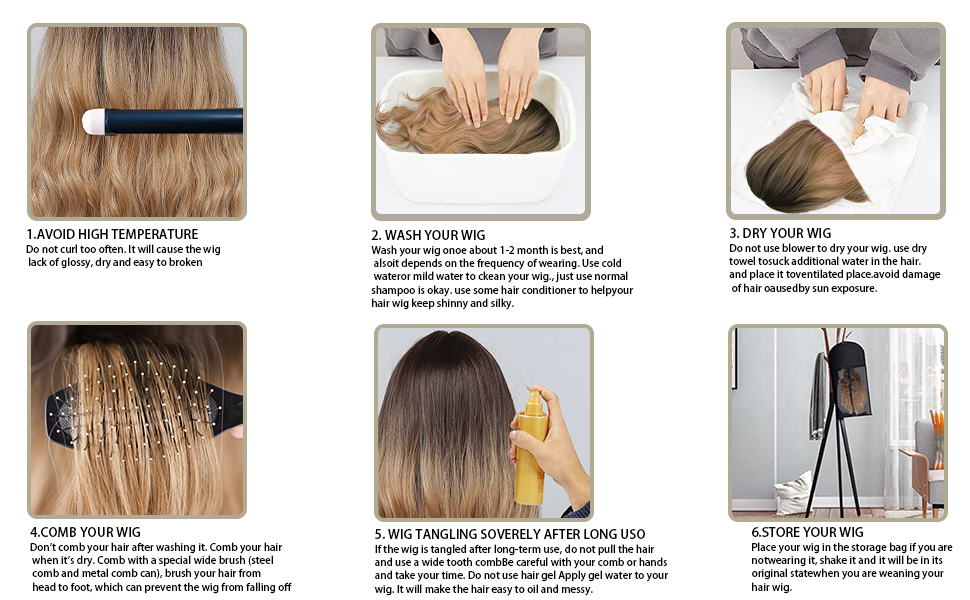
Embracing Versatility with Bob Wigs
Casual Everyday Styles
For daily wear of your bob wig, effortless styles include classic straight, tucking behind ears, textured ends, low ponytail, side part, and half-up bun. Accessories like headbands or scarves, along with minor adjustments, offer chic variations for a stylish yet easygoing appearance that suits any occasion.
Enhance your wig’s style with accessories like headbands, scarves, clips, and hats. These additions add flair, keep hair in place, and offer versatility. Experiment with various options to elevate your look and express your unique fashion sense while rocking your bob wig.

Formal and Special Occasions
Bob wigs offer the versatility to create elegant updos and glamorous styles. Try a sleek chignon, a twisted bun, or a high ponytail for sophisticated elegance. Experiment with voluminous curls or intricate braids for red-carpet-worthy glamour. These elevated styles showcase the versatility of bob wigs, making them suitable for formal events and special occasions.
Incorporating hair accessories can elevate the polish of your bob wig. Use jeweled pins for a touch of glamour, delicate headbands for a refined look, or statement clips to add personality. Flowers, pearls, and tiaras also enhance elegance. The right accessory can transform your bob wig into a polished and sophisticated masterpiece.
Final
Bob wigs hold an incredible transformative power, enabling wearers to effortlessly switch between diverse styles, from casual to formal, and express various personalities. Their adaptability allows for quick changes that mirror mood and occasion, showcasing how a single wig can unleash countless looks and embody the wearer’s versatility and self-expression.
Delve into the realm of bob wigs with the confidence to experiment and express your distinct self. Your hair choices are a canvas for creativity—whether it’s a classic bob, an edgy asymmetrical cut, or a playful wavy texture. Embrace the transformative power of these wigs to reveal various facets of your personality. Embody your uniqueness and stride forward with the assurance that your style reflects the wonderful journey of self-discovery.

